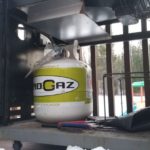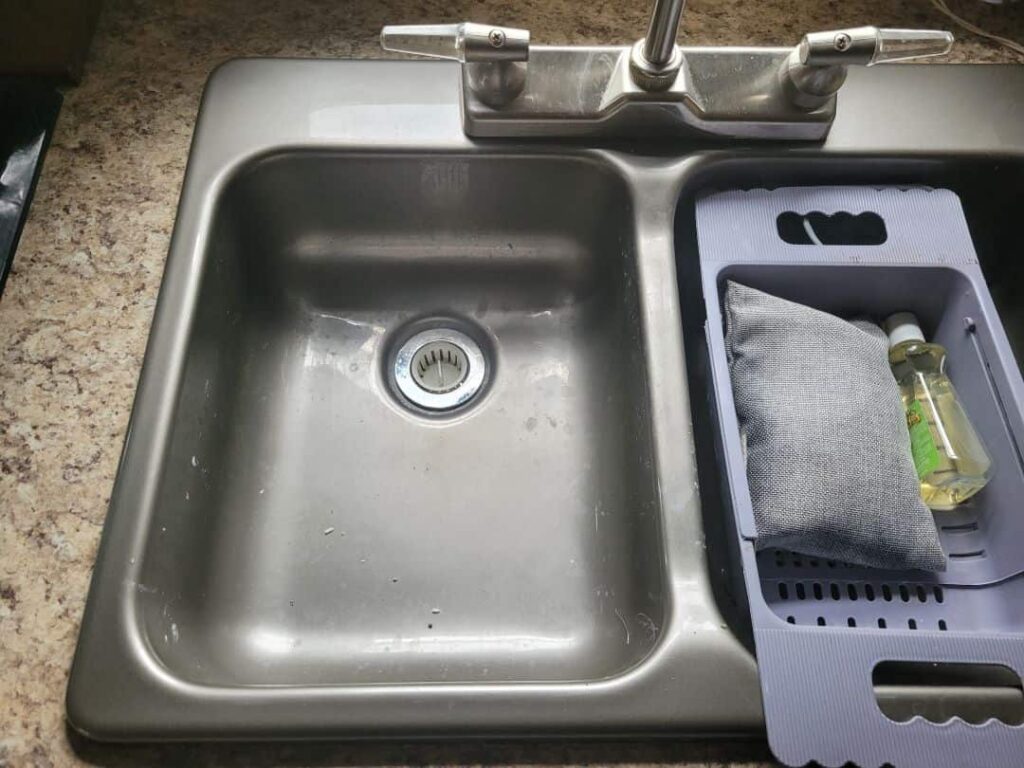
Just the same as your kitchen sink, an RV sink can get clogged from all sorts of things like food leftovers, grease and small objects. Of course, a clogged sink is always discovered at the most inopportune time and no-one feels like dealing with it when it occurs.
How to Tell that the Sink is Clogged
Typically, a clogged sink will happen over an extended period of time. If you notice that the water isn’t draining as fast as it once was, then there is a good chance that the pipes leading from the sink to the gray water tank are slowly becoming clogged with food and grease.
This is the ideal time to work on getting the clog removed, before it becomes completely plugged and the water will no longer drain at all. A fully clogged pipe can lead to leaks and a big mess.
The BEST flat top grills for camping
What is Clogging the RV Sink?
As I mentioned before, if the clog is happening over an extended period of time, then chances are it is from small bits of food and grease being let down the sink while washing dishes and preparing meals.
If however, the clog occurs suddenly and without warning, then it could very well be that a larger object inadvertently made its way down the drain. It could be a kids toy or some paper towel that suddenly has blocked the pipes.
While knowing what the likely blockage is caused by can be helpful, it isn’t always that easy to tell. Having some idea can be helpful in picking a solution for removing the blockage though.
Food and Grease Clogging the RV Sink
If you suspect that the clog is caused by a buildup of food and grease, then there are a few methods that can help to loosen that debris and clear the pipes.
Vinegar, Baking Soda and Hot Water
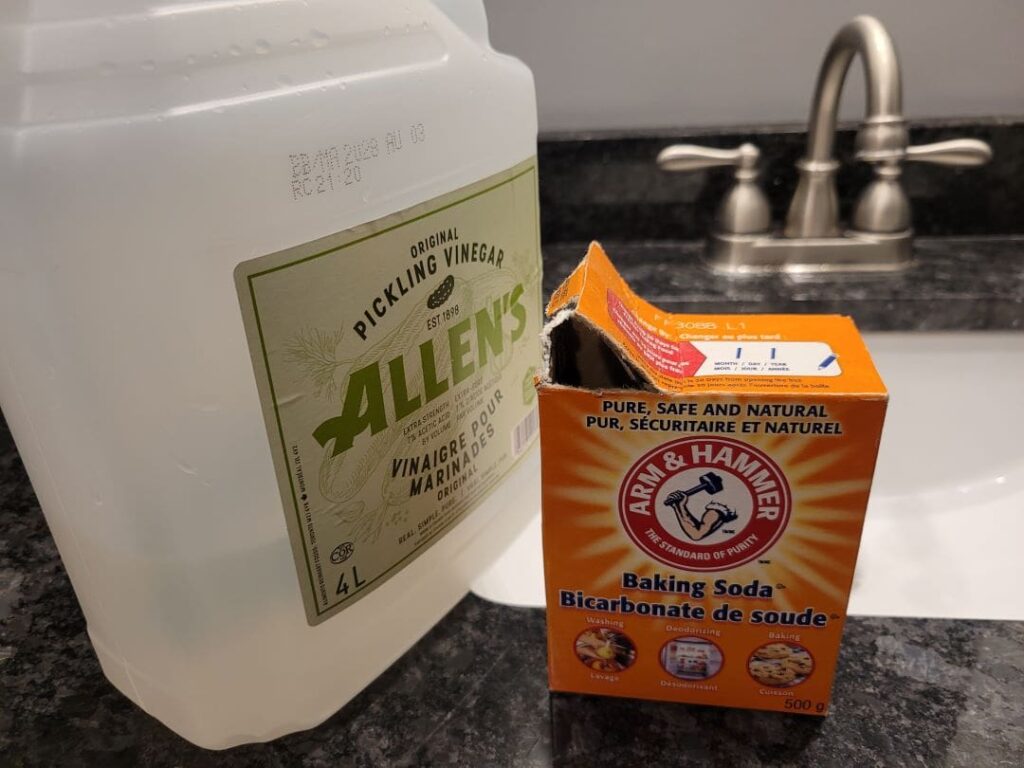
This solution may not work for a total blockage of your RV sink, but works really well to unclog a sink that is showing signs of blockage. If you notice that water is draining more slowly down the pipes than it used to, then it’s time for a little pipe maintenance.
Start by pouring around a quarter to half cup of baking soda into the drain. Next pour an equal amount of vinegar into the sink and let it fizz and work its magic on breaking down grease and food buildup in the drain pipes. Once the fizzing has stopped, pour a pot of hot water down to wash any left over loose particles into the gray tank.
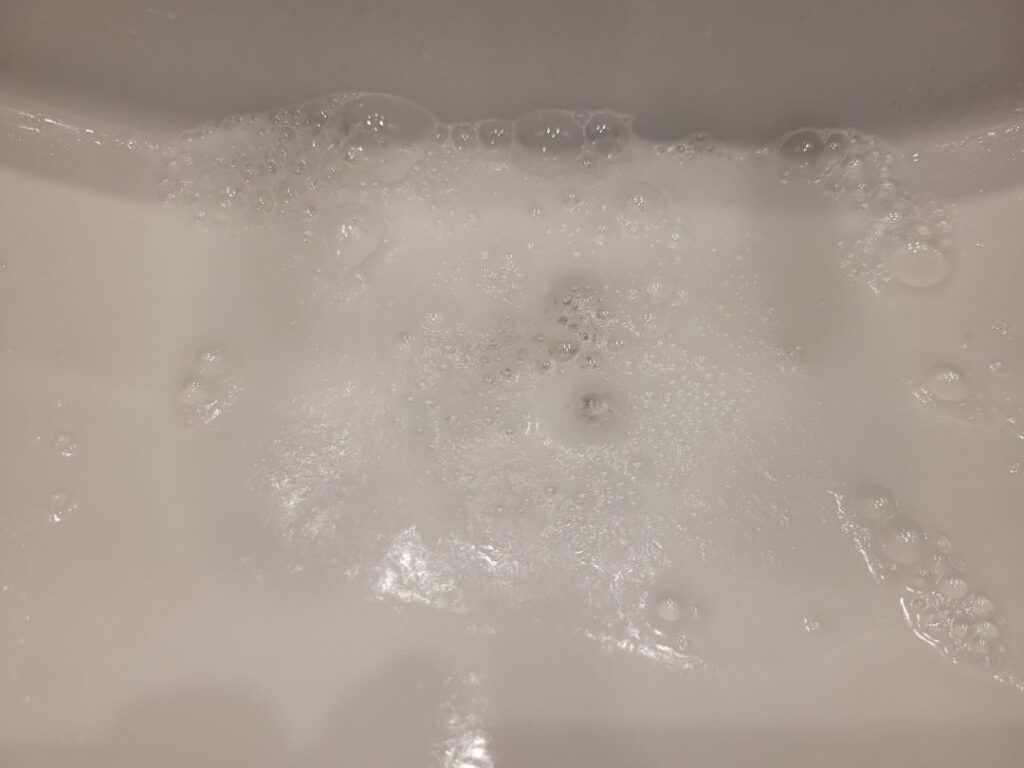
Pro Tip: To avoid regular clogs in your RV sink, pour this mixture down the sink once every month or two.
RV Drain Cleaners
If left for too long, that food and debris can really pack into the drain pipes and a vinegar and baking soda solution won’t be strong enough to break it down and release it. In these cases, the next step is to try something a little stronger.
While you might be tempted to go straight for the Drano, an RV pipe system isn’t as durable as your home plumbing and Drano can reduce the life of the plastic pipes and rubber seals in the system. We suggest trying an eco-friendly alternative that’s been designed for RV and camper pipes. The Green Gobbler Drain Clog remover comes in both powder and liquid options and has great reviews for its effectiveness.
All you need to do is pour the powder down the drain and add some hot water. Let that work to break down the clog for about 15 minutes and flush.
RV Plunger
In order to be ready to tackle clogs when they happen, it’s obviously a great idea to have some of these products on hand. Even if you do use some form of chemical to break down the clog in your RV sink, some really tough clogs will still need some additional tools to finish the job. A plunger can be used to add some pressure to the pipe and force debris through the pipes as it loosens. Simply put the plunger overtop of the sink drain and push down to suction and pull up to release. You can keep working this method until the food and debris has dislodged and water flows.
While a plunger will usually unclog an RV sink, it can also cause temporary leaks in pipes, most often directly under the sink as it forces water through the pipes in both directions. Some seals cannot handle the force of the plunger and will open up enough for water to leak through. This is temporary though and shouldn’t cause any permanent damage.
Drain Snake
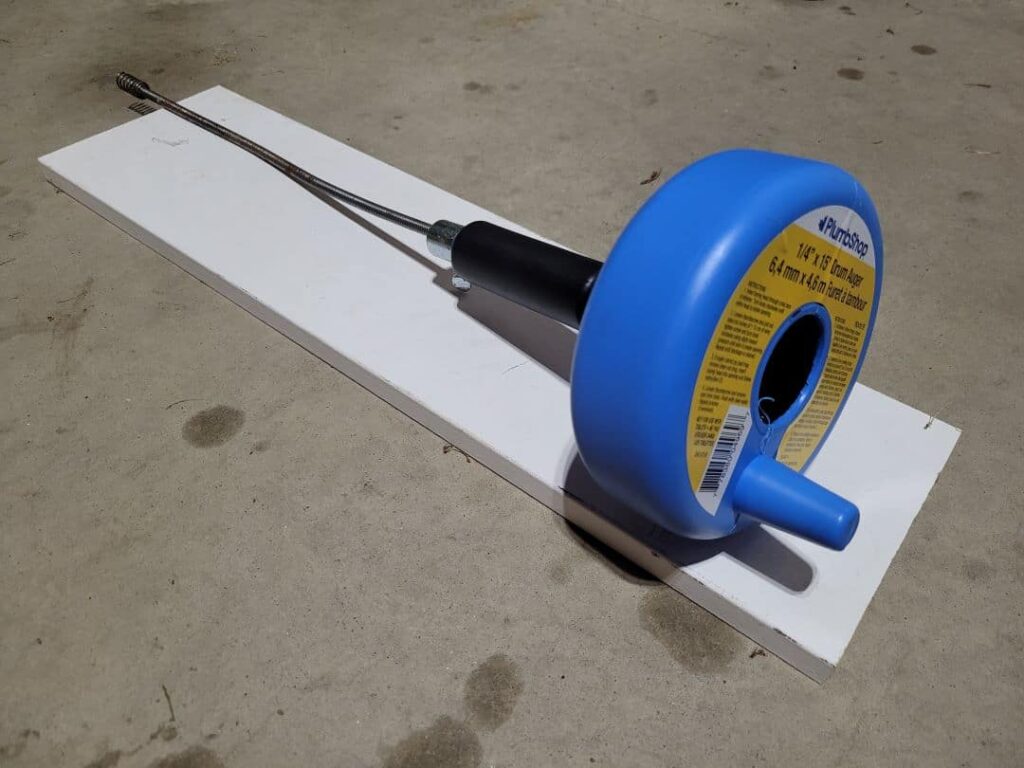
A safer option that won’t cause any damage or leaks in the RV pipes is the use of a drain snake or drain auger. There are a lot of variations in looks and quality for drain snakes. Some are a one piece plastic rod with multiple hooks on them and are really effective at pulling hair out of drain pipes. Others are designed more specifically for augering through food and grease in order to create some space for water to drain through.
To use a drain snake, start by inserting the auger end into the sink drain and pushing it as far as possible while turning it in w clockwise motion. Keep doing this until you hit the blockage. Continue turning the snake until you’ve pushed the debris or pushed the object causing the blockage all the way to the gray water tank. Once the clog has been released, pull the snake back through the pipe and clean it.
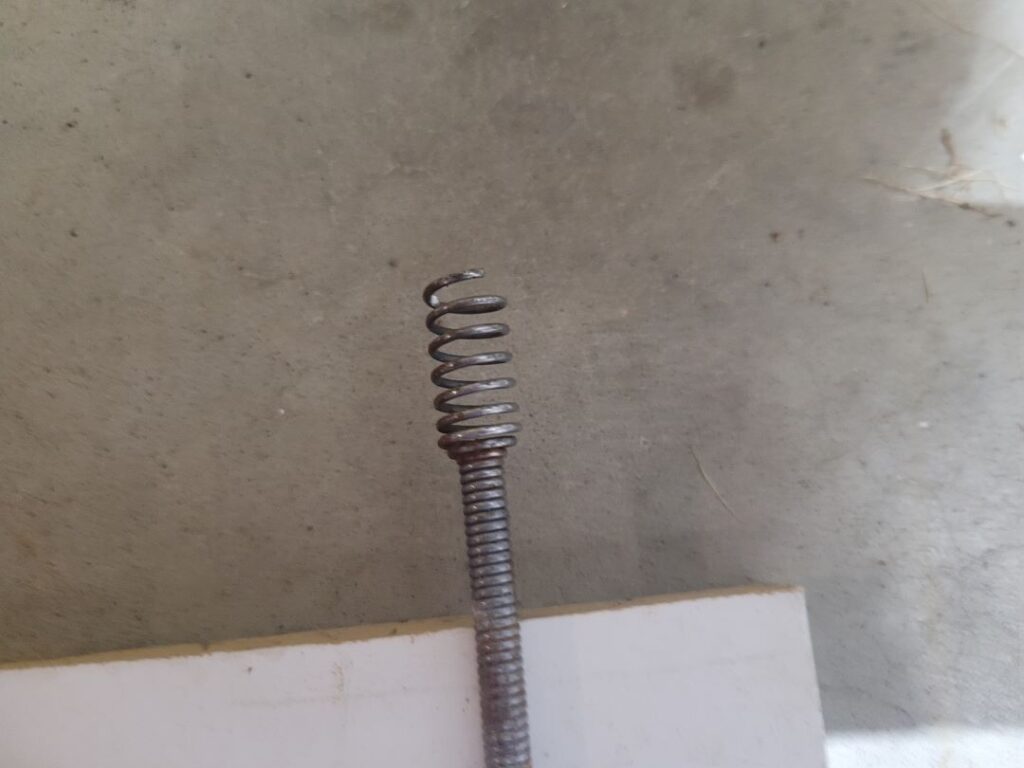
Next, run some hot water down the sink to remove any remaining food, grease and debris from the pipes.
Removal of Pipes
In the worst case scenario, after trying all of the other methods to unclog an RV sink, the last option is to remove the clogged pipes, clean them out and replace them. If you’re going to attempt this, first make sure to turn off the water supply to avoid a huge mess.
Next, you should be able to detach the drain pipe from the sink underneath the counter. Most often, there will be a connector that can be unscrewed and removed. Make sure to have a bucket placed underneath the sink as the water that has been trapped in the pipe and sink will create quite a mess otherwise.
Once detached, you can inspect the pipe and clean out any clogs that you find. Reattach the pipe to the sink and turn the water back on.
How to Avoid RV Sink Clogs
Of course the best thing you can do to avoid these headaches would be to avoid having a sink clog at all. There are steps you can take to reduce the risk and they aren’t too difficult to complete.
- Avoid pouring grease down the sink. Pour bacon and food grease into a can or jar and dispose of it. Wipe greasy plates and pans with a paper towel before rinsing or washing in the sink.
- Scrape food off of plates before washing them. It’s much better to scrape leftover food, whether it be crumbs or other, into the garbage then risking it going down the sink.
- Use drain catchers. Drain catchers will allow water to drain from the sink, but will catch any larger food particles so that they can be thrown into the garbage.
- Regular maintenance. One of the best things you can do is to pour that mixture of baking soda and vinegar down the drain every month or two. This will reduce the likelihood of food building up in the pipes.
We love writing about the things that make a real difference in your outdoor experience. Some of the links in this post are affiliate links in which case we may earn a small commission at no extra cost to you if you make a purchase. We truly appreciate you taking the time to read our content and hope it has added value to your next camping and outdoor adventure.

